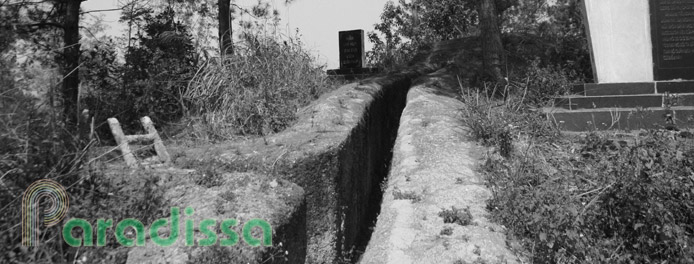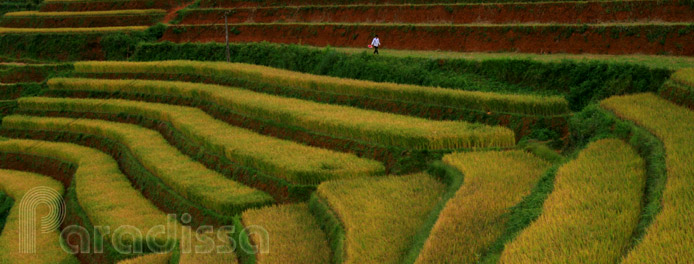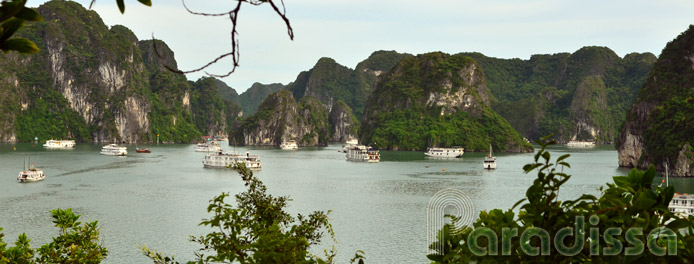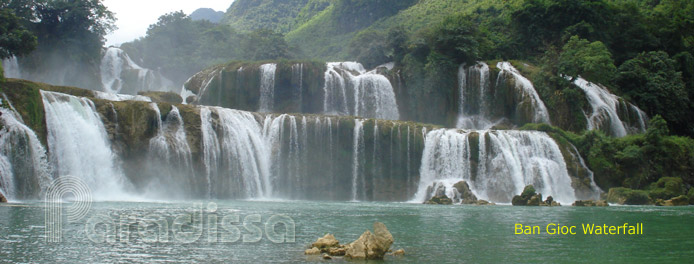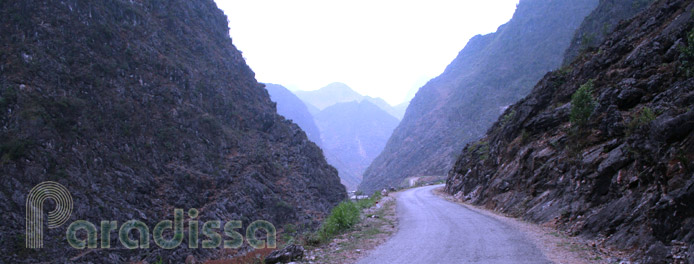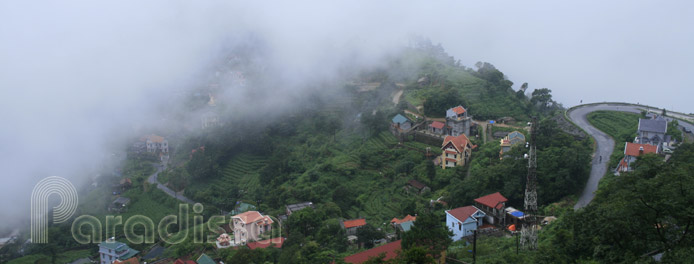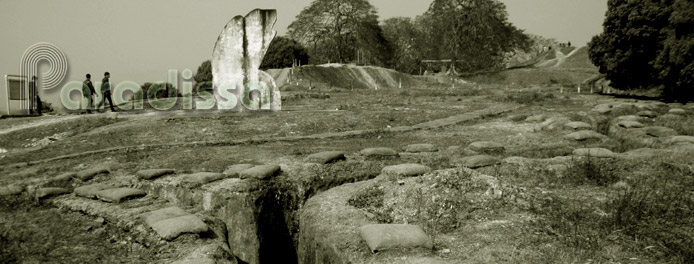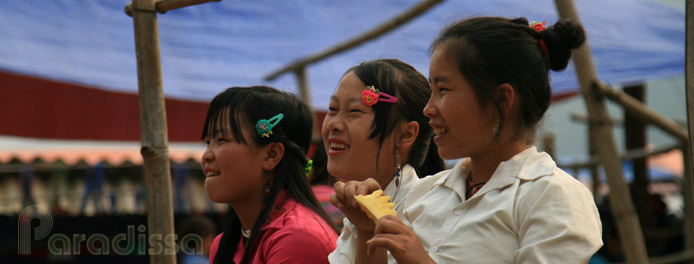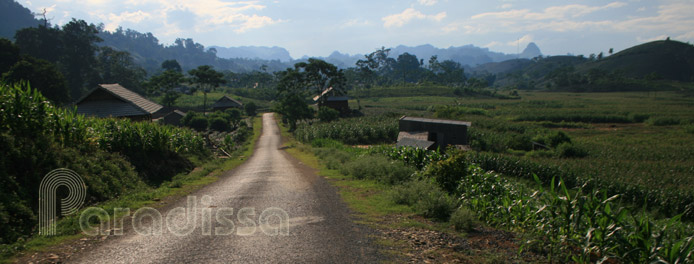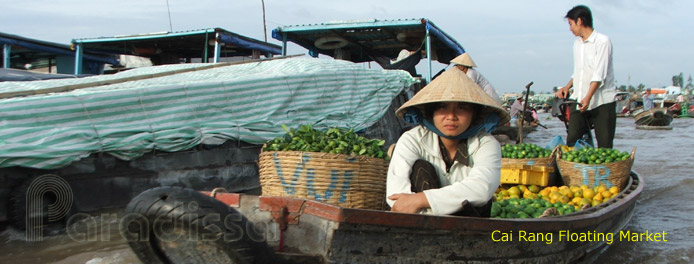The First Indochina War was pivotal in the history of the Vietnamese Army, in shaping up a completely different chapter in the history of French Indochina, in influencing different revolutionary movements in the world and in showing a new balance of power among super powers in the world back in the time and nowadays...
Battlefield Tour of First Indochina War Overview
Our First Indochina War tour is an adventure trip designed for veteran travellers and those who are interested in learning about the most important battles in the First Indochina War between Viet Minh (The League for the Independence of Vietnam) and France.

This war was from 1946 to 1954, but the battles featured on this trip were between 1951 and 1954. All the visited former battlefields are in the North West of Vietnam. The length of the trip is 7 days, 6 nights.
On the tour, you can understand more about different military operations as well as strategies by both sides. We will recall the development of each battle as well as the aftermaths, so that you can put them all together into interesting conclusions yourself.

A bird's eye view of Hoa Binh City
Day-to-day itinerary
Day1 Hanoi – Moc Chau (190km) (no included meals)
Day2 Moc Chau – Na San – Co Noi – Son La (131km) (B)
Day3 Son La – Tuan Giao – Muong Phang – Dien Bien Phu (200km) (B)
Day4 Dien Bien Phu (B)
Day5 Dien Bien Phu – Muong Lay (former Lai Chau) – Lai Chau (200km) (B)
Day6 Lai Chau – Than Uyen – Mu Cang Chai - Tu Le – Nghia Lo (220km) (B)
Day7 Nghia Lo – Hanoi (200km) (B)
Hotels
Standard hotel at Moc Chau and 2-3* hotels at the other cities/towns.
{Inclusions
English-speaking guide as per itinerary;
Twin/Double-shared accommodation as indicated in the program;
Private car for all airport transfers and tours as indicated in the program;
Meals as indicated in the program ( B=Breakfast);
All admission fees during guided times in the program;
}
{Exclusions
Insurance of any types;
Early check-ins and late check-outs: check-in time: 14:00 PM and check-out time is 11:00 A.M unless otherwise indicated by each hotel;
International airfares and airport taxes other than those mentioned as included above;
Drinks, laundry, bar or other personal expenses;
Others not clearly specified clearly in the inclusions;
}
Detailed itinerary
Day1 Hanoi – Moc Chau (190km) (no included meals)
0800 A.M Depart Hanoi for the North-West of Vietnam via Route 6, a historical road with major battles between Viet Minh and France throughout the First Indochina War. While leaving the Red River Delta we may still see some fighting bunkers left by the road side. They are legacies from Jean De Lattre De Tassigny, once the Commander in Chief of the French troops in Indochina.

Our first visit today is Hoa Binh City where we recall Hoa Binh Battle. De Lattre started his career in Indochina with the bunkers around the Red River Delta and his life as well as his career ended during the course of the Battle of Hoa Binh which was the result of his own initiative. De Lattre was the most difficult Commander in Chief of the French troops in Indochina that General Giap of Viet Minh had to deal with. But it was also thanks to De Lattre's strategy to deploy troops to Hoa Binh that General Giap found the resolution for the otherwise deadlock situation during the dry season of 1951-1952.

It was that Battle of Hoa Binh that lots of new elements were introduced into the war. At the end of the journey, you can look back and see for yourself how important the Battle of Hoa Binh for the course and aftermath of the First Indochina War.

Leaving Hoa Binh, we continue on the breathtaking road to Moc Chau, a plateau of over 1,000m elevation. Moc Chau is the gateway to the North-West of Vietnam. From Moc Chau, there are roads to Laos, to the Red River Delta, to the North Central Region of Vietnam, to the Liberated Zone of Viet Minh... Moc Chau was liberated during Operation North-West by Viet Minh in 1952.

Mountains at Moc Chau Plateau, Son La
Day2 Moc Chau – Na San – Co Noi – Son La (131km) (B)
Breakfast at the hotel.
0800 A.M Depart Moc Chau for Son La via the historical Route 6 which was heavily bombed by the French during the Dien Bien Phu Campaign. The road today is in great condition, but it was very different in 1954 though. Tens of thousands of volunteer porters plied on this busy route bringing supplies for Viet Minh during the Dien Bien Phu Campaign. Most of them came from Thanh Hoa Province, 200km south of Hanoi. They traveled on foot via mountain trails and via Route 15 on the western side of the country under heavy French bombardments. They carried supplies using a bamboo pole on their bare shoulder or by French-made bicycle.

The French intelligence had been correct in estimating the transport power that Viet Minh could utilize for a battle at Dien Bien Phu. They had been correct in foreseeing that Viet Minh would not be able to provide supplies for their troops fighting in the remote area. The French intelligence was not lucky though, because these special “walking travelers” did miracles invalidating their calculations.

Our first visit today is Co Noi Road Intersection which was among the worst bombed of the supply routes. From Co Noi there were routes to the Red River Delta, to Yen Bai and Phu Tho, Thai Nguyen, Tuyen Quang. After Co Noi, there was only Route 6 to Dien Bien Phu. Most supplies had to go via Co Noi back then. After Co Noi, we travel further and visit Na San. Na San Battle was the last one of the North-West Campaign in the dry season of 1952-1953. Na San was an amazing battle with interesting aftermaths that you will learn once on the site.
We arrive at Son La City at mid day. Have time for refreshment.
In the afternoon, visit Son La Prison where Vietnamese patriots were jailed during the colonial times.
Free time for the remainder of the day.
Overnight at Son La.

Na San Airfield at Son La
Day3 Son La – Tuan Giao – Muong Phang – Dien Bien Phu (200km) (B)
Breakfast at the hotel.
0800 A.M Depart Son La for Dien Bien Phu. The road goes up all the way to Pha Din Pass which is about mid way. The mountains are breathtaking. The more we travel on this route, the more we admire the logistics work that Viet Minh did during the Dien Bien Phu Campaign. Pha Din Pass is over 1,000m in elevation and 32km in length. There were not enough trees for camouflage on the pass. Those on the pass risked their life every moment. Tons of different types of bombs were dropped down onto the pass during the battle to stop the flow of incessant supplies.
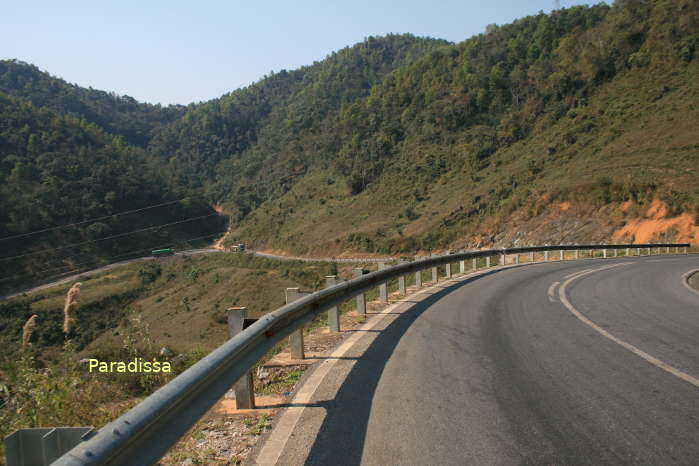
After Pha Din Pass, the road is less hilly. There are scenic valleys and rice terraces every now and again. The 80km of road from Tuan Giao to Dien Bien Phu was expanded by Viet Minh for Dien Bien Phu Battle. Viet Minh also had to make a fresh new road of about 80km which traveled through mountains peaks of over 1,000m and deep ravines for bringing their heavy artillery into good positions that could fire targets down in the valley of Muong Thanh. The road was so well camouflaged that the French was not aware of it, even with reconnaissance planes scanning the area days and nights. The work was done in 2 months' time. Isn't it something of miracle!

At Na Tau Township, we turn into a small road to Muong Phang. Visit the once Commander Head Quarter of Viet Minh for Dien Bien Phu Campaign. There are mountain peaks at Muong Phang that General Giap observed the battlefield from. We'd need an extra day to get to the top of these mountains and special binoculars to observe Dien Bien Phu from these peaks though.
We arrive at Dien Bien Phu in late afternoon. Check into the hotel and have leisure time.
Overnight at Dien Bien Phu.

Muong Phang Viet Minh Headquarters
Day4 Dien Bien Phu (B)
Breakfast at the hotel.
Morning visit to Him Lam Hill (Beatrice), Doc Lap Hill (Gabrielle) and Ban Keo (Anne Marie). These hills protected the northern side of the Hedgehog of Dien Bien Phu. These hills were targets of the first range of attacks by Viet Minh. It was these attacks that for the first time Viet Minh used heavy artillery (105mm howitzers) which startled the French. Once on the site, we can see how brutal the battles were in the past.

In the afternoon, visit the central zone of the Hedgehog and the strategic eastern hills & knolls taking in: The Commander Post, the A1 Hill (Eliane 2), C1, C2 and D1 Hills. In late afternoon, visit the site of once Hong Cum Zone protecting the hedgehog from the south.
Overnight at Dien Bien Phu.

The A1 Knoll (Eliane 2) at Dien Bien Phu
Day5 Dien Bien Phu – Muong Lay (former Lai Chau) – Lai Chau (200km) (B)
Breakfast at the hotel.
Travel on Route 12 to Muong Lay Town which was Lai Chau earlier – a French stronghold in the North-West of Vietnam earlier. It was on this route that Viet Minh conducted amazing battles to block the French troops to withdraw from Lai Chau to Dien Bien Phu and to stop reinforcements from Dien Bien Phu. You will definitely have interesting discovery of the strategies and the fighting skills that Viet Minh had back in the time.
There is not much left of the past at Muong Lay Town nowadays as the former area is under water for the reservoir of Son La Hydro Power Plant. The landscape is very beautiful. We have time for sightseeing at Muong Lay then proceed to Lai Chau Town which is newly established amid stunning mountains and tea plantations.
Overnight at Lai Chau.

Lai Chau Town
Day6 Lai Chau – Than Uyen – Mu Cang Chai - Tu Le – Nghia Lo (220km) (B)
Breakfast at the hotel.
Today we travel on a breathtaking road with wild mountains, tea plantations and rice terraces to Yen Bai Province. The road was also a supply route for Viet Minh. Khau Pha Pass was also heavily bombed by the French during the Dien Bien Phu Campaign.
Today we travel back in time to learn more about the North West Campaign by Viet Minh in 1952. The campaign started with the battle at Nghia Lo. It was amazing that the big operation that Viet Minh conducted had never been discovered by the French and the campaign was a shock to the French troops and French intelligence. During the battles of the North-West Campaign the French was not even aware of the magnitude of the operation even!
On the journey, we stop at Tu Le, a heavenly valley with rice terraces at the base of the Khau Pha Pass. During the North-West Campaign, the French dropped down the 6th Colonial Parachute Battalion at Tu Le to help those withdrawing from Nghia Lo and Gia Hoi. We will learn more how they were greeted by Regiment 165 of the 312th Division of Viet Minh.
We arrive at Nghia Lo later in the day. Have time to recall Nghia Lo Battle and visit the valley. Then, we check into the hotel and have free time.
Overnight at Nghia Lo.

The former French Camp at Nghia Lo, Nghia Lo Battle

View of Nghia Lo from Nghia Lo Camp
Day7 Nghia Lo – Hanoi (200km) (B)
Breakfast at the hotel.
Travel back to Hanoi via Phu Tho. The mountains at Phu Tho were where Viet Minh's big divisions took shelter in between major battles. Phu Tho was also the area where major attacks to the Red River were launched. The area was an important rearguard for Viet Minh Liberated Zone.
While Viet Minh was bringing down one position after another of the French strongholds in the North-West Campaign, the French attacked Phu Tho with 30,000 troops of infantry battalions, parachute battalions, Dinassauts (Naval Assault Infantry), artillery battalions, armor battalions and engineering companies. The operation coded “La Lorraine” was aimed at attacking Viet Minh from the back and hopefully General Giap would have to bring his troops back from the North-West. La Lorraine was the operation that the French mobilized the biggest number of troops during the First Indochina War. It was amazing that all had been in calculations by General Giap. And only Regiment 36 of the 308th Division was sent back to Phu Tho. It is just interesting that many of these men came from villages in Phu Tho Province and they knew how to fight in their homeland...
Leaving the mountains of Phu Tho behind, we arrive back in Hanoi in the early afternoon. We trust you had a wonderful adventure back in time with Paradissa to the former battlefields in the North West of Vietnam.

The site of the former Chan Mong - Tram Than Ambush by Viet Minh



